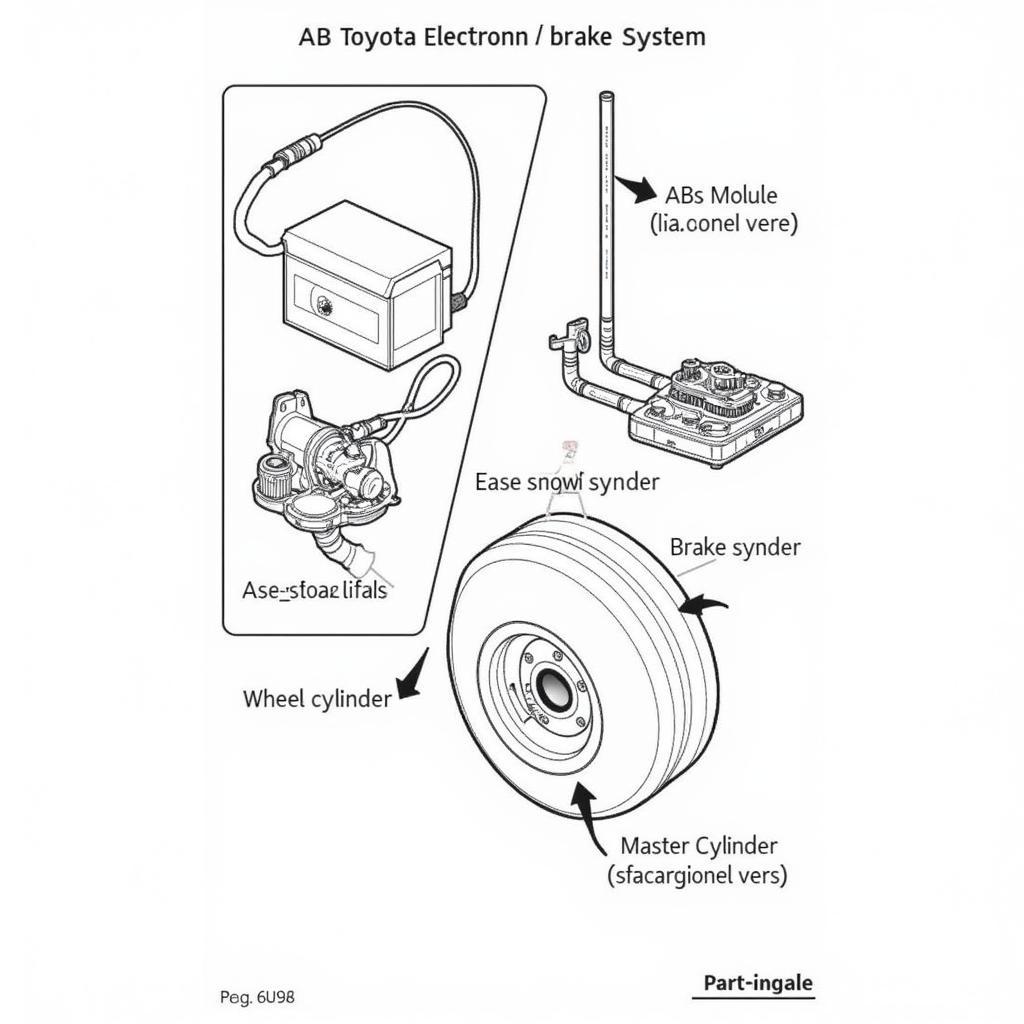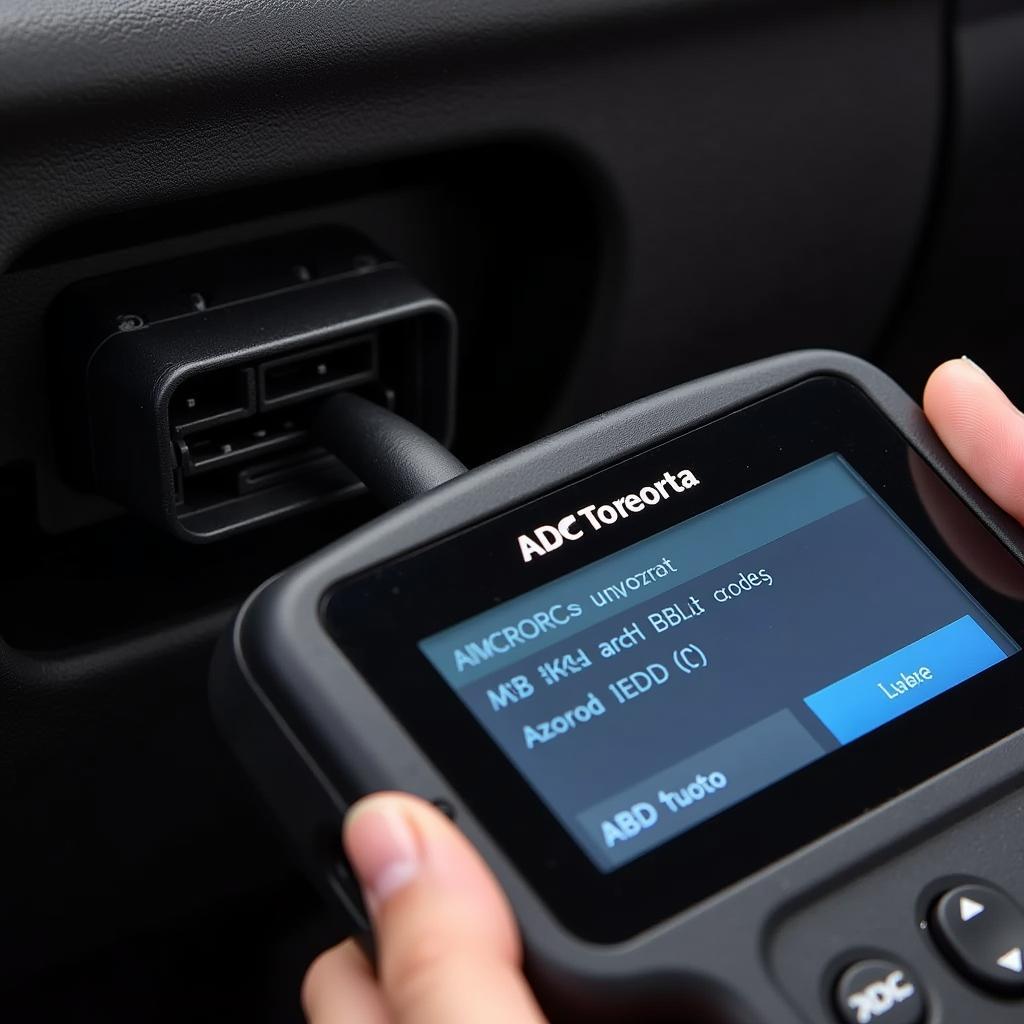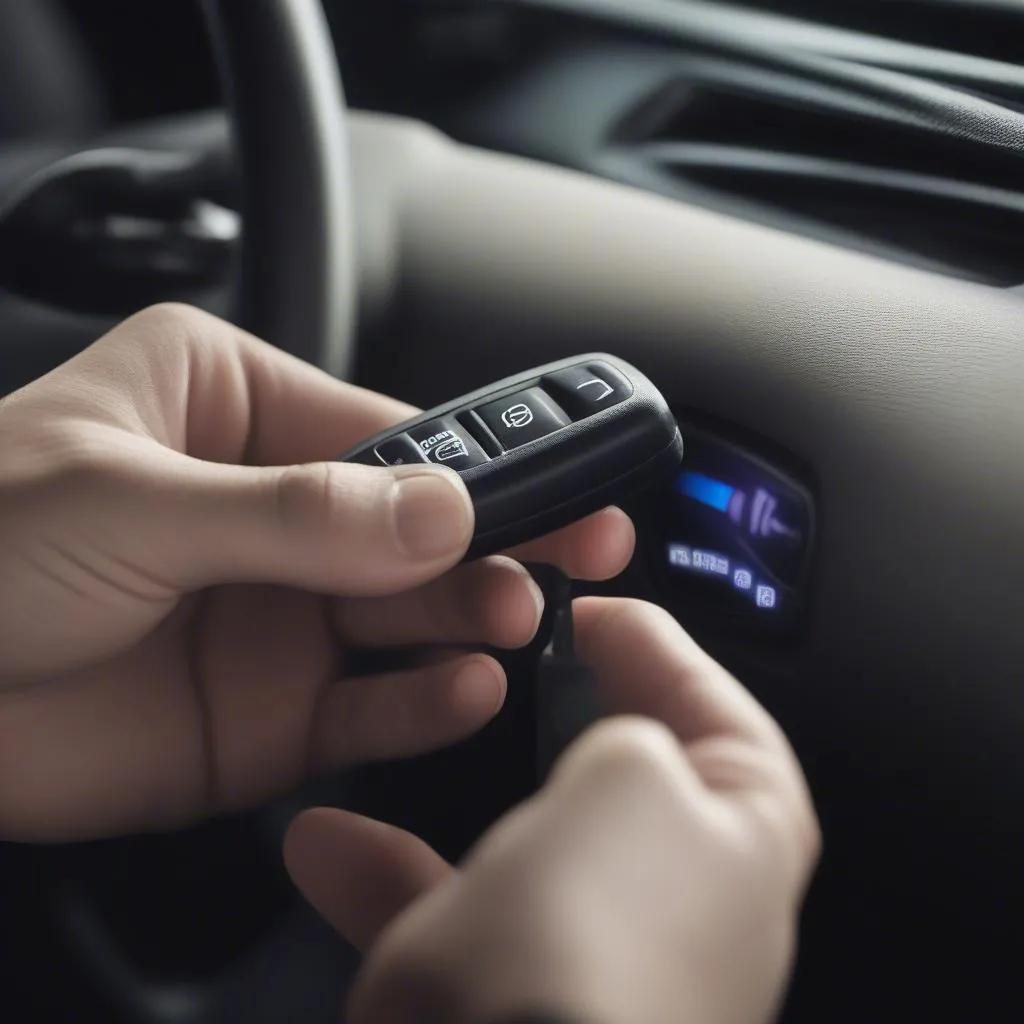The Toyota electronic brake system warning light can be a source of anxiety for any driver. Understanding what causes this light to illuminate and how to address the underlying issue is crucial for maintaining safety and preventing further damage to your vehicle. This article provides a comprehensive guide to troubleshooting and resolving Toyota electronic brake system warning light issues.
If the electronic brake system warning light comes on in your Toyota, you need to take swift action. Consult your owner’s manual for specific instructions related to your model. The brake warning light can indicate anything from low brake fluid to a serious issue with the ABS system. You might even need a professional diagnosis. Speaking of brake warning lights, you might find this article on the 2004 Mini Cooper brake warning light helpful if you own a Mini Cooper.
Understanding the Toyota Electronic Brake System
The electronic brake system in modern Toyotas is a complex network of components working together to ensure optimal braking performance. Key components include the anti-lock braking system (ABS), electronic brake-force distribution (EBD), and brake assist. These systems rely on sensors, actuators, and electronic control units (ECUs) to monitor and control brake pressure, preventing wheel lockup and improving stability during braking.
Common Causes of Toyota Electronic Brake System Warning Light Issues
There are several reasons why your Toyota’s electronic brake system warning light might be on. Some common causes include:
- Low Brake Fluid: This is often the most straightforward cause. Check your brake fluid reservoir and top it off if necessary. However, consistently low brake fluid can indicate a leak, requiring further inspection.
- Worn Brake Pads: Brake pads wear down over time, and thin pads can trigger the warning light. Inspect your brake pads and replace them if they are nearing the wear indicators. If you are unsure of how to check brake pads consider looking into resources available about other car brake pad warnings such as the Mini Cooper S brake pad warning light.
- Faulty ABS Sensor: A malfunctioning ABS sensor can disrupt the electronic brake system’s functionality and illuminate the warning light. A diagnostic scan tool can pinpoint a faulty sensor.
- Malfunctioning ABS Module: The ABS module is the brain of the system. If it fails, the entire system can be compromised. This requires professional diagnosis and repair.
- Brake Light Issues: Although seemingly unrelated, a faulty brake light switch or bulb can sometimes trigger the electronic brake system warning light. Check all your brake lights.
 Toyota Electronic Brake System Components
Toyota Electronic Brake System Components
Troubleshooting Toyota Electronic Brake System Warning Light Issues
If your Toyota’s electronic brake system warning light is on, here are some troubleshooting steps you can take:
- Check the Owner’s Manual: Your owner’s manual is the best resource for specific information about your Toyota model. It may provide troubleshooting tips or specific instructions for your situation.
- Inspect Brake Fluid Level: Ensure the brake fluid reservoir is full. If it’s low, add brake fluid, but be sure to use the correct type specified in your owner’s manual. If the fluid continues to drop then consider looking into solutions for similar issues such as this article regarding the seat belt warning light meaning.
- Check Brake Pads: Inspect your brake pads for wear. If they are thin or worn down to the indicators, replace them.
- Scan for Diagnostic Codes: A diagnostic scan tool can retrieve trouble codes from the ABS system, providing valuable insights into the issue. This is often necessary to identify faulty sensors or modules.
- Consult a Professional: If you’re unable to diagnose or resolve the issue yourself, seek the help of a qualified automotive technician specializing in Toyota electronic brake systems.
 Diagnostic Scan Tool Reading ABS Codes
Diagnostic Scan Tool Reading ABS Codes
What if the light is flashing?
A flashing electronic brake system warning light often indicates a more serious problem. It’s crucial to pull over safely as soon as possible and have your vehicle towed to a qualified mechanic for diagnosis and repair.
“Ignoring a flashing brake warning light can lead to significant safety risks and potentially costly repairs down the road,” says John Miller, a certified automotive technician with over 20 years of experience. “Addressing the issue promptly can prevent further damage and ensure your Toyota’s braking system is operating at its best.”
Preventing Toyota Electronic Brake System Warning Light Issues
Regular maintenance is key to preventing electronic brake system problems. This includes:
- Routine brake inspections and fluid changes
- Timely replacement of worn brake pads and rotors
- Periodic inspections of ABS sensors and wiring
Conclusion
The Toyota electronic brake system warning light serves as an essential indicator of potential brake system problems. Understanding the common causes and taking appropriate troubleshooting steps can help you address these issues effectively, ensuring your safety and the longevity of your vehicle. Don’t delay in addressing this warning; prompt action is crucial for preventing further damage and maintaining optimal braking performance. If you’re unsure about anything, consult a qualified technician for expert diagnosis and repair. Remember, a well-maintained brake system is paramount for safe and reliable driving. You can also check resources like Mini Cooper reset brake pad warning light or 2004 Mini Cooper S brake pad warning light reset for related information.
“Regular maintenance is the best way to prevent electronic brake system problems in your Toyota,” adds Miller. “Sticking to a regular maintenance schedule can save you money and headaches in the long run.”
FAQ
- What does the Toyota electronic brake system warning light look like? It’s typically a symbol resembling a circle with an exclamation point inside, surrounded by parentheses.
- Is it safe to drive with the electronic brake system warning light on? It depends on the severity of the issue. If the light is steady, proceed with caution and have the issue diagnosed promptly. If it’s flashing, do not drive and have your vehicle towed.
- How much does it cost to fix a Toyota electronic brake system warning light issue? The cost varies depending on the underlying problem, ranging from a simple fluid top-up to more expensive repairs like replacing an ABS module.
- Can I reset the Toyota electronic brake system warning light myself? While you can sometimes clear the light by addressing the underlying issue (like low brake fluid), it’s recommended to have a professional diagnose the problem to ensure it’s properly resolved.
- How often should I have my Toyota’s brake system inspected? It’s recommended to have your brakes inspected at least once a year or as specified in your owner’s manual.
- What can happen if I ignore the electronic brake system warning light? Ignoring the warning light can lead to more severe brake problems, compromising safety and potentially leading to expensive repairs.
- Can a faulty ABS sensor cause the Toyota electronic brake system warning light to come on? Yes, a malfunctioning ABS sensor can trigger the warning light.


